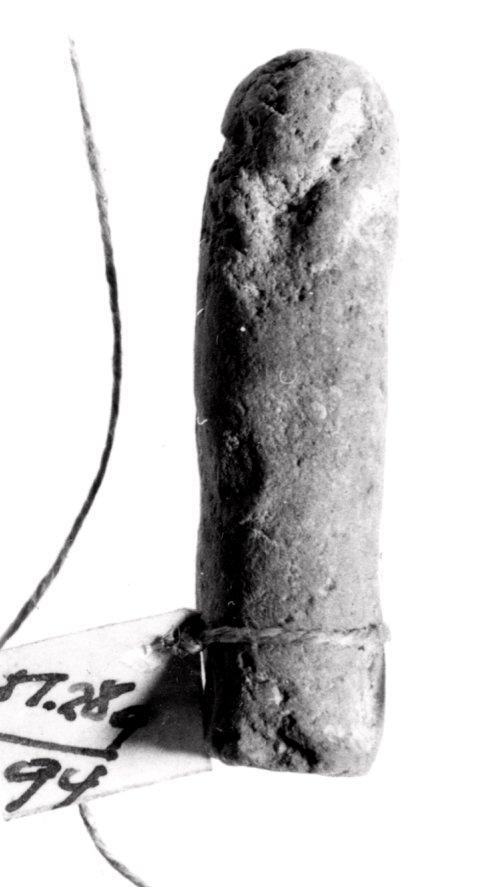
Ushabti
Egyptian Art
| Place of production | Akhmim, Egypt |
|---|---|
| Date | 3rd century BC |
| Object type | tomb equipment |
| Medium, technique | Wood, paint; gilded |
| Dimensions | 179 x 50 x 40 cm |
| Inventory number | 51.2097.1-2 |
| Collection | Egyptian Art |
| On view | Museum of Fine Arts, Basement Floor, Ancient Egypt, Funerary beliefs |
The lid of this anthropoid coffin has a relatively small-sized gilded face flanked by a large wig. The background colour of the decorative surface is dark red. The upper body is entirely covered by a richly decorated wesekh-collar.
The first scene panel focuses on the kneeling sky goddess Nut covering her outstretched wings protectively over the deceased. She wears a sun disc on her head and holds maat-feathers, symbols of the maintenance of world order in her hands. On both wings, wedjat-eyes providing magical protection are placed, supplemented by a mummy-shaped figure on the left side. The second panel is bordered by a winged sun disc from above, with the mummified body lying on the funerary bier in the center flanked by the two traditional mourning goddesses, Isis and Nephthys. The scene is a variant of the vignette illustrating Chapter 151 of the Book of the Dead. The central figure of the third register is a ba-bird with outstretched wings, accompanied by a goddess holding a shen-ring on both sides.
From the line of the knees the typically horizontal iconographical arrangement is replaced by a vertical one. On the legs the surface of the lid is divided into two parts by three text columns in the middle. The offering formula invoking different gods (Osiris, Sokar-Osiris, Anubis, and Isis) also records the name of the deceased (Hortesnakht). On both sides of the inscription are five squatting divinities holding knives, rotated by 90 degrees. In addition, on the left side of the lid are another twenty-three, and on the right eighteen squatting figures with knives providing magical protection for the deceased lying inside the coffin.
The coffin stands on a rectangular pedestal, the sides of which are decorated with the traditional palace-facade motif. On the footboard another traditional motif can be seen representing the Apis bull carrying the deceased on its back to the netherworld.
The closest parallels of this coffin, which show the same characteristic features in iconography, can be dated back to the first half of the Ptolemaic Period and originated from Akhmim.
This record is subject to revision due to ongoing research.